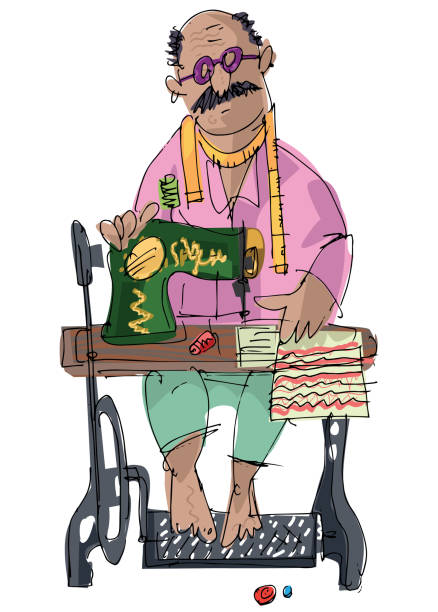Tailor Perth Excellence: Where Top Quality Meets Personalized Tailoring
Tailor Perth Excellence: Where Top Quality Meets Personalized Tailoring
Blog Article
Comprehending the Tailoring Process: From Fabric Choice to Last Fitting for the Perfect Closet
The tailoring procedure is a complicated interplay of art and scientific research, beginning with the vital decision of fabric option and culminating in the specific modifications of last installations. Each textile kind brings one-of-a-kind top qualities that affect not just the aesthetic allure but additionally the garment's durability and suitability for various events.
Significance of Fabric Choice
Selecting the best textile is crucial in the customizing process, as it directly affects the convenience, sturdiness, and total aesthetic of the last garment (tailor perth). The choice of textile sets the structure for the garment's style, capability, and performance. Various fabrics have distinct residential or commercial properties, such as stretch, weight, and breathability, which can considerably impact exactly how the garment drapes and fits the body
In addition, textile choice affects the garment's longevity and convenience of care. High-grade materials can endure wear and tear, preserving their look and framework gradually, while lower-quality materials may lead to pilling or fading. Furthermore, the appropriate material contributes to the garment's ability to transition throughout seasons and celebrations, thus enhancing convenience.
A tailored item made from an appropriate fabric not just showcases craftsmanship but likewise elevates the user's confidence. Comprehending the subtleties of material choice is vital for any tailoring venture. It makes certain that the end product not just fulfills the aesthetic needs of the customer but also lines up with practical needs, consequently attaining a harmonious balance in between type and feature in the customized closet.
Types of Fabrics and Their Uses
Recognizing the numerous kinds of textiles available is crucial for making notified decisions during the customizing procedure. Each textile possesses one-of-a-kind qualities that dictate its viability for particular garments and events.
Cotton, recognized for its breathability and gentleness, is perfect for informal wear and summer apparel. Its flexibility enables it to be customized right into everything from t-shirts to outfits. Woollen, on the various other hand, is favored for its warmth and framework, making it a superb option for formal fits and outerwear - tailor perth. Its all-natural flexibility aids garments maintain shape with time.
Silk radiates high-end and is light-weight, making it best for eveningwear and fragile shirts; nevertheless, it calls for careful handling as a result of its fragility. Bed linen, with its distinctive finish, is a prominent choice for cozy climates, supplying a airy and crisp feel, yet it wrinkles quickly, which might influence the garment's look.
Synthetic materials, such as polyester and nylon, offer toughness and resistance to wrinkles, making them appropriate for day-to-day wear and active clothes. Understanding these textile types and their residential or commercial properties permits far better decision-making, making certain that each tailored item not just fits well but likewise straightens with the desired objective and occasion.
The Tailoring Strategies Described
The art of customizing depends on a selection of strategies that transform material right into well-fitted garments. Central to this procedure is pattern preparing, where a tailor produces design templates based upon the client's dimensions and preferred design. This preliminary step ensures that the garment will fit the wearer appropriately prior to any kind of cutting occurs.
Once patterns are established, cutting strategies enter play. Accuracy is paramount as inaccuracies can cause misfitting garments. Tailors typically utilize various cutting methods, such as single-layer reducing for intricate layouts and multiple-layer cutting for effectiveness on typical patterns.
Basting is another crucial strategy, enabling tailors to briefly sew textile assemble for a preliminary fitting. This Source technique offers the opportunity to examine the drape and overall shape prior to last sewing.
Seaming methods, consisting of flat-felled seams and French seams, enhance the garment's toughness and aesthetic charm. Tailors also employ methods such as interfacing and cushioning to offer structure and shape to certain areas, like collars and shoulders.
Last but not least, ending up strategies, consisting of hemming and side finishing, make certain the garment's long life while providing a refined look. Together, these methods create the foundation of reliable customizing, resulting in charming, custom-fit clothing.
Fitting Modifications and Considerations

Key factors to consider include the shoulder fit, which needs to neither sag nor restrict movement, and the sleeve length, which must enable comfortable arm activity while preserving a refined look. Additionally, adjustments at the midsection useful source can fine-tune the silhouette, with options to allow out or take in material as needed.
The surge of pants is one more vital variable; it must sit pleasantly over the hips without triggering discomfort, allowing for simplicity of movement. Hemming sizes for both trousers and skirts ought to reflect the user's recommended design while respecting percentages.

Maintaining Your Tailored Clothing
Appropriate upkeep of customized garments is necessary to protecting their fit and look in time. To guarantee longevity, regular cleansing is paramount. Always adhere to the treatment tag directions, which might advise completely dry cleansing for fragile materials or machine cleaning for more resilient materials. Avoid regular laundering, as this can wear down the textile and modify the garment's shape.
Storage is equally important; use cushioned hangers for coats and coats to keep shoulder framework, and store pants folded up neatly or hung to prevent creasing. Secure garments from direct sunshine, which can fade colors and damage fibers.
Furthermore, periodic examinations for minor repair services can stop bigger concerns. Look for loose buttons, fraying seams, or indicators of moth damages, resolving these issues without delay to preserve the garment's stability.
Lastly, take into consideration seasonal rotation. Using customized pieces in moderation enables fabrics to recoup, prolonging their life expectancy. By executing these maintenance techniques, you can make sure Learn More Here that your customized garments remain as pristine as the day you initially wore them, improving your optimal closet for years to come.
Conclusion
The customizing process, incorporating material option, proficient techniques, and exact fitting modifications, plays an important duty in producing garments that enhance both comfort and design. Recognizing the value of upkeep extends the life of tailored garments, strengthening their value in a well-curated wardrobe.
Selecting the best textile is essential in the tailoring procedure, as it directly affects the convenience, toughness, and total aesthetic of the final garment. The option of fabric sets the foundation for the garment's style, functionality, and efficiency. Different textiles have one-of-a-kind buildings, such as stretch, breathability, and weight, which can dramatically affect how the garment drapes and fits the body.
The art of customizing depends on a variety of techniques that change fabric into well-fitted garments.The customizing process, including fabric option, skilled techniques, and exact fitting modifications, plays an essential role in developing garments that enhance both convenience and style.
Report this page